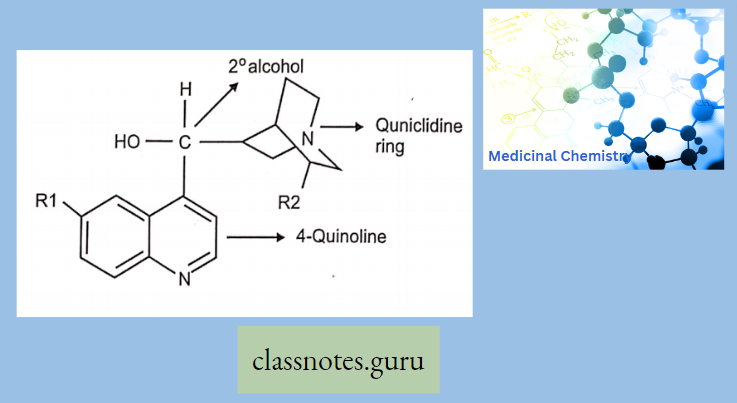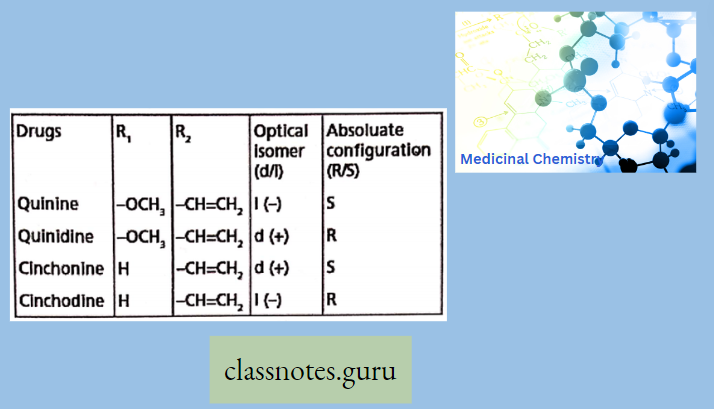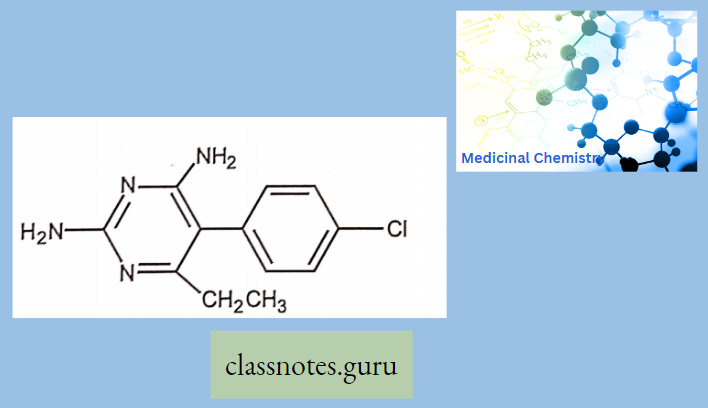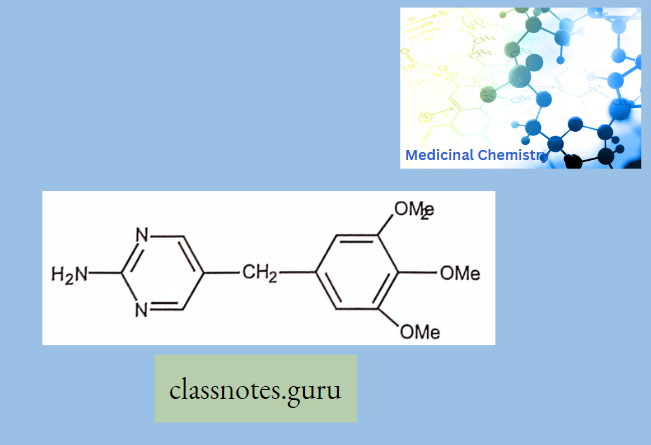Anti Malarial Agents Introduction
Malaria in humans is caused by infection with protozoa parasites of the genus Plasmodium.
- These parasites spend an asexual phase in men and a sexual phase in female anopheles mosquitoes.
- Out of several hundred known anopheles species, the four species, which infect man are:
- Plasmodium Falciparum
- Plasmodium Vivax
- Plasmodium malariae
- Plasmodium ovale
Etiology Of Malaria
Malaria is a life-threatening disease. It’s typically transmitted through the bite of an infected Anopheles mosquito.
- Infected mosquitoes carry the Plasmodium parasite. When this mosquito bites you, the parasite is released into your bloodstream.
- Once the parasites are inside your body, they travel to the liver, where they mature. After several days, the mature parasites enter the bloodstream and begin to infect red blood cells.

- Within 48 to 72 hours, the parasites inside the red blood cells multiply, causing the infected cells to burst open.
- The parasites continue to infect red blood cells, resulting in symptoms that occur in cycles that last two to three days at a time.
- Malaria is typically found in tropical and subtropical climates where the parasites can live. The World Health Organization (WHO) states that, in 2018, there were an estimated 216 million cases of malaria in 91 countries.
Read and Learn More Medicinal Chemistry III Notes
What Causes Malaria
Malaria can occur if a mosquito infected with the Plasmodium parasite bites you. Four kinds of malaria parasites can infect humans: Plasmodium vivax, P. ovale, P. malariae, and P. falciparum.
- P. falciparum causes a more severe form of the disease and those who contract this form of malaria have a higher risk of death. An infected mother can also pass the disease to her baby at birth. This is known as congenital malaria.
- Malaria is transmitted by blood, so it can also be transmitted through:
- An organ transplant
- A transfusion
- Use of shared needles or syringes
What Are The Symptoms Of Malaria
The symptoms of malaria typically develop within 10 days to 4 weeks following the infection. In some cases, symptoms may not develop for several months. Some malarial parasites can enter the body but will be dormant for long periods Common symptoms of malaria include:
- Shaking chills that can range from moderate to severe
- High fever
- Profuse sweating
- Vomiting
- Abdominal pain.
- Diarrhea
- Anemia
- Muscle pain
- Convulsions
- Coma
- Bloody stools
How Is Malaria Diagnosed
Your doctor will be able to diagnose malaria. During your appointment, your doctor will review your health history, including any recent travel to tropical climates. A physical exam will also be performed.
- Your doctor will be able to determine if you have an enlarged spleen or liver. If you have symptoms of malaria, your doctor may order additional blood tests to confirm your diagnosis.
- These tests will show:
- Whether you have malaria
- What type of malaria do you have
- If your infection is caused by a parasite that’s resistant to certain types of drugs
- If the disease has caused anemia
- If the disease has affected your vital organs
Tips To Prevent Malaria
There’s no vaccine available to prevent malaria. Talk to your doctor if you’re traveling to an area where malaria is common or if you live in such an area. You may be prescribed medications to prevent the disease.
- These medications are the same as those used to treat the disease and should be taken before, during, and after your trip.
- Talk to your doctor about long-term prevention if you live in an area where malaria is common. Sleeping under a mosquito net may help prevent being bitten by an infected mosquito. Covering your skin or using bug sprays may also help prevent infection.
- If you’re unsure if malaria is prevalent in your area, the CDC has an up-to-date map of where malaria can be found.
How Is Malaria Treated
Malaria can be a life-threatening condition, especially if you’re infected with the parasite P. falciparum. Treatment for the disease is typically provided in a hospital. Your doctor will prescribe medications based on the type of parasite that you have.
- In some instances, the medication prescribed may not clear the infection because of parasite resistance to drugs. If this occurs, your doctor may need to use more than one medication or change medications altogether to treat your condition.
- Additionally, certain types of malaria parasites, such as P. vivax and P. ovale, have liver stages where the parasite can live in your body for an extended period and reactivate at a later date causing a relapse of the infection.
- If you’re found to have one of these types of malaria parasites, you’ll be given a second medication to prevent a relapse in the future
Malaria Classification
Quinoline Derivative Cinchona Alkaloids
- Quinine
- Quinidine,
- Cinchonine
- Cinchodine


- All four derivatives of 4-quinoline methanol are linked with a substituted quinclidine moiety.
- Quinine (1-isomer) has anti-malarial activity while d-isomer Quinidine has anti arrythmatic agent.
Quinine-
- Most active ingredients (5%) of cinchona bark
- It has schizonticidal and gametocidal for Plasmodium vivex species.
- SC and IM injection form is not used due to local tissue damage.
- Many times, it is administered with pyrimethamine, sulfadoxine, doxycycline, or mefloquine.
- It is affected against erythrocytic Merozoites.
- It is used in chloroquine resistance plasmodium falciparum infection.
- A high dose of quinine may cause quinidine, like a depressant effect on the heart vasodilation and hypotension.
Quinine Adverse Effects:
Cinchonism, Nocturnal Leg Cramps: A high dose of quinine may produce a quinidine-like depressant effect on the heart causing vasodilation and may produce hypotension
SAR:
- 2° Alcohol in the structure of quinine alkaloids is responsible for the activity, and Ri (-OCH2) and R2 (-CH=CH2) groups are not responsible for the activity.
- Quinine antagonizes the action of physostigmine on skeletal muscle by exerting a Curare-like effect.
- Due to its low therapeutic index, it is not used alone and is always used in combination (Primaquine, Pyrimethamine, and Sulphonamide0
4-Amino Quinoline Derivatives:
Example, Chloroquine, Hydroxychloroquine, Amodiaquine

Mechanism Of Action:
- It is concerted in parasitized red cells where it binds to double-strand DNA.
- This results in inhibition of DNA and RNA polymerase function.
- It is used for the treatment of all types of malaria except “Chloroquine resistance Plasmodium falciparum”.
SAR: In chloroquine 7-chloro, 30 Amine and aminoalkyl side chains are required for activity
Metabolite: Desethyl chloroquine, Bidesethyl chloroquine Adverse effect
- Bone marrow depression, Ratinopathy
- Hemolysis in patients with glucose-6-phosphate dehydrogenase deficiency
- Photo allergic dermatitis since it accumulates into the skin Amodiaquin
Metabolite Mechanism Of Action: Ferriprotoporphyrin, which is released by plasmodium-containing erythrocytes acting as chloroquin receptor.
- The combination of Ferriprotoporphyrin and chloroquin causes lysis of parasites and or erythrocyte membranes.
- The quinone imine system is similar to the acetaminophen toxic metabolite.
- Hydroxychloroquine group on ethyl group of diethyl amino group.
8-Amino Quinoline: For example, Primaquin, Pamaquin, and Quinocide have asymmetric centers in their structure but Pentaquin does not have them.

Amino Quinoline Adverse effect:
- Hemolytic anemia
- Leucopenia
- Methemoglobinemia
Metabolite 5-Hydroxy primaquine and 5-Hydroxy 6-desmethyl primaquine
Metabolite Mechanism Of Action:
- Interferes in protein synthesis with enzymes and with erythrocyte phospholipids metabolism in parasites.
- Primaquine inhibits the gametocyte stage; the levo isomer is less active than the dextro isomer.
9-Aminoacridines Derivatives: Quinacrine, Acriquin, Aminoacrichin

- They all have acridine rings in their structure.
- Yellow pigmentation of the skin and yellow color appear in the urine along with acridine dye.
Aminoacridines Derivatives Adverse Effect- Aplastic anemia
Aminoacridines Derivatives Mechanism Of Action:
- It acts at many sites within the cells including the intercalation of DNA strands
- It is tumorigenic and mutagenic and used as a sclerosing agent.
2,4-Diaminnopyrimidine Derivative:
- Pyrimethamine, Trimethoprim
- Used in the exoerythrocytic and erythrocytic phase of disease
Diaminnopyrimidine Derivative Mechanism Of Action: It causes selective inhibition of the protozoal enzyme DHFR (Dihydro folate reductase) to disturb the protozoal DNA synthesis and finally death of Protozoal cells.
SAR Points:
- Electron donating group at C-6 position
- Cl at Para position
- Two rings are not separated by carbon atoms.
Pyrimethamine: Used in chloroquine-resistant falciparum malaria


Biguanides:
- It is a prodrug and is not active until it is not metabolized in vivo to dihydrotriazine.
- Prongunil (Chloroguanil) is metabolized to an active triazine ring having anti-malarial activity.
Atovaquone: It is a naphthoquinone derivative used in combination with proguanil administered in the ratio (2.5:1)
Mechanism Of Action: It interferes with deoxy thymidylate synthesis by inhibiting the dihydrofolate reductase enzyme.
Sulphone And Sulphonamide: Long-acting sulphonamide is used in combination with Pyrimethamine/Trimethoprim. E.g., Dapson
Miscellaneous Mefloquine:
- Antibiotics: Doxycycline, Clindamycin, lincomycin, Chloramphenicol ^ Halofantrine: It is a phenanthrene derivative
- Artemisinin: It is a natural product excreted from the dry leaves of Artemisia anna.
- The key structure is to be a “Trioxane” ring consisting of endoperoxide and doxepine oxygen.
- Artemisinin is reduced to dihydroartemisinin, having asymmetric carbon forms.

- Artemether and artemotil are oil-soluble or non-polar methyl or ethyl salts of artemisinin.
- Artesunate is a water-soluble or polar hemisuccinate salt of Artemisinin.
Synthesis Of Chloroquine

Synthesis Of Pamaquine

Anti Malarial Agents Multiple Choices Question And Answers
Question 1. Atovaquoneis…
- Napthaquinone Derivative
- Trioxane Derivative
- Guanidine derivative
- None
Answer: 1. Napthaquinone Derivative
Question 2. Pamaquine containing
- Quinoline ring
- Isoquinoline
- Indole ring
- All
Answer: 1. Quinoline ring
Question 3. Halofantrine Contains
- Phenanthracene ring
- Anthracene ring
- Naphthalene ring
- Benzene ring
Answer: 1. Phenanthracene ring
Question 4. Quinine obtained from
- Cinchona bark
- cinchona leaf
- Both
- None
Answer: 1. Cinchona bark
Question 5. Adverse effect Of
- Hemolytic anemia
- sickle cell anemia
- Aplastic Anemia
- None
Answer: 1. Hemolytic anemia
Anti Malarial Agents Short Question And Answers
Question .1 Write the mode of action of quinine.
Answer:
Mode Of Action Of Quinine: It has Schizonticidal and gametocidal for Plasmodium vivex species.
Question .2 Write the mode of action of biguanide.
Answer:
The Mode Of Action of Biguanide: It interferes with deoxy thymidylate synthesis by inhibiting the dihydrofolate reductase enzyme.
Question .3 Write the adverse effect of primaquine.
Answer:
The Adverse Effect Of Primaquine: Hemolytic anemia Leucopenia Methemoglobinemia.
Question .4 Write the adverse effect of chloroquine.
Answer:
Adverse Effects Of Chloroquine: Bone marrow depression, Retinopathy Hemolysis in patients with glucose-6-phosphate dehydrogenase deficiency Photo allergic dermatitis since it accumulates into the skin Amodiaquin
Question .5 Write the mode of action of pyrimethamine.
Answer:
Mode Of Action Of Pyrimethamine: It causes selective inhibition of the protozoal enzyme DHFR (Dihydro folate reductase) to disturb the protozoal DNA synthesis and finally death of protozoal cells.
Question .6 Write the mode of action of amodiaquine.
Answer:
Mode Of Action Of Amodiaquine: It is concerted in parasitized red cells where it binds to double-strand DNA. This results in inhibition of DNA and RNA polymerase function.
